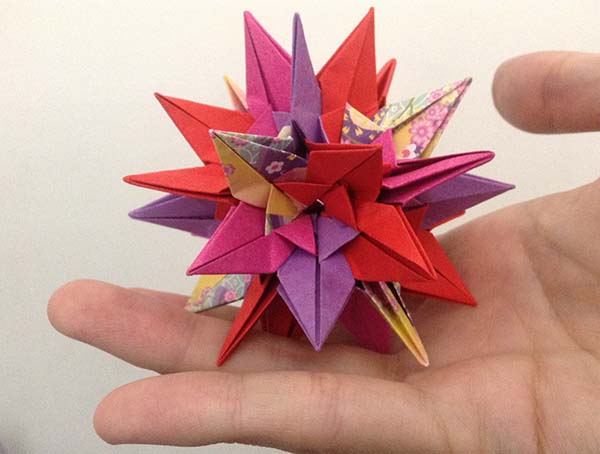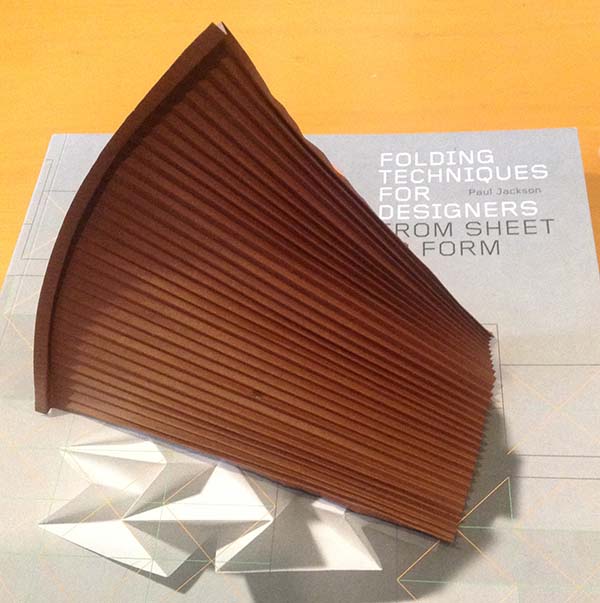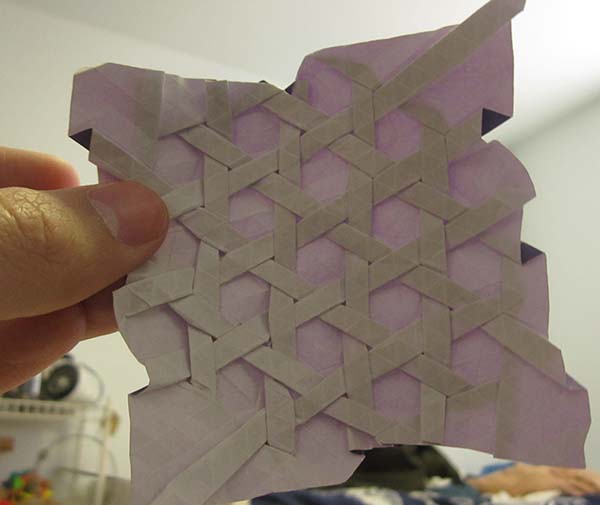Announcement: I now have a flickr account for my origami photos! Now the images are bigger, and you can find them all in one place. There are also lots of photos that I haven’t (yet) posted on my blogs.

Arrow Illusion, version 2. An original design. My hand is in the photo to show that this is a real mirror.
Over a year ago, I designed an origami arrow that points in the opposite direction when looked at in a mirror. I wanted to revisit the design, and make it easier to fold, because this is basically the most popular origami thing I have ever done. Below, I show detailed diagrams, and a sneak peek behind the curtain. [Read more…]






